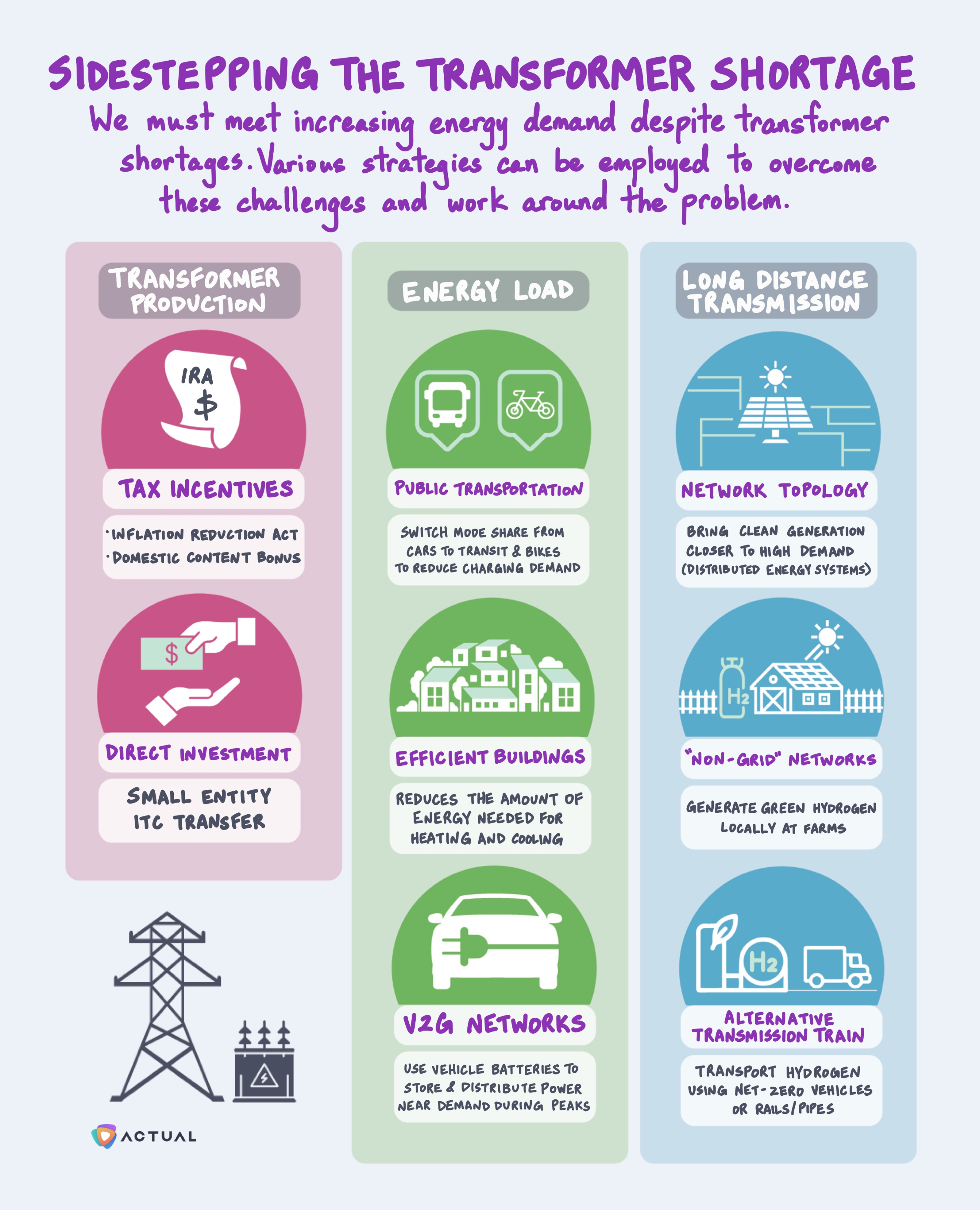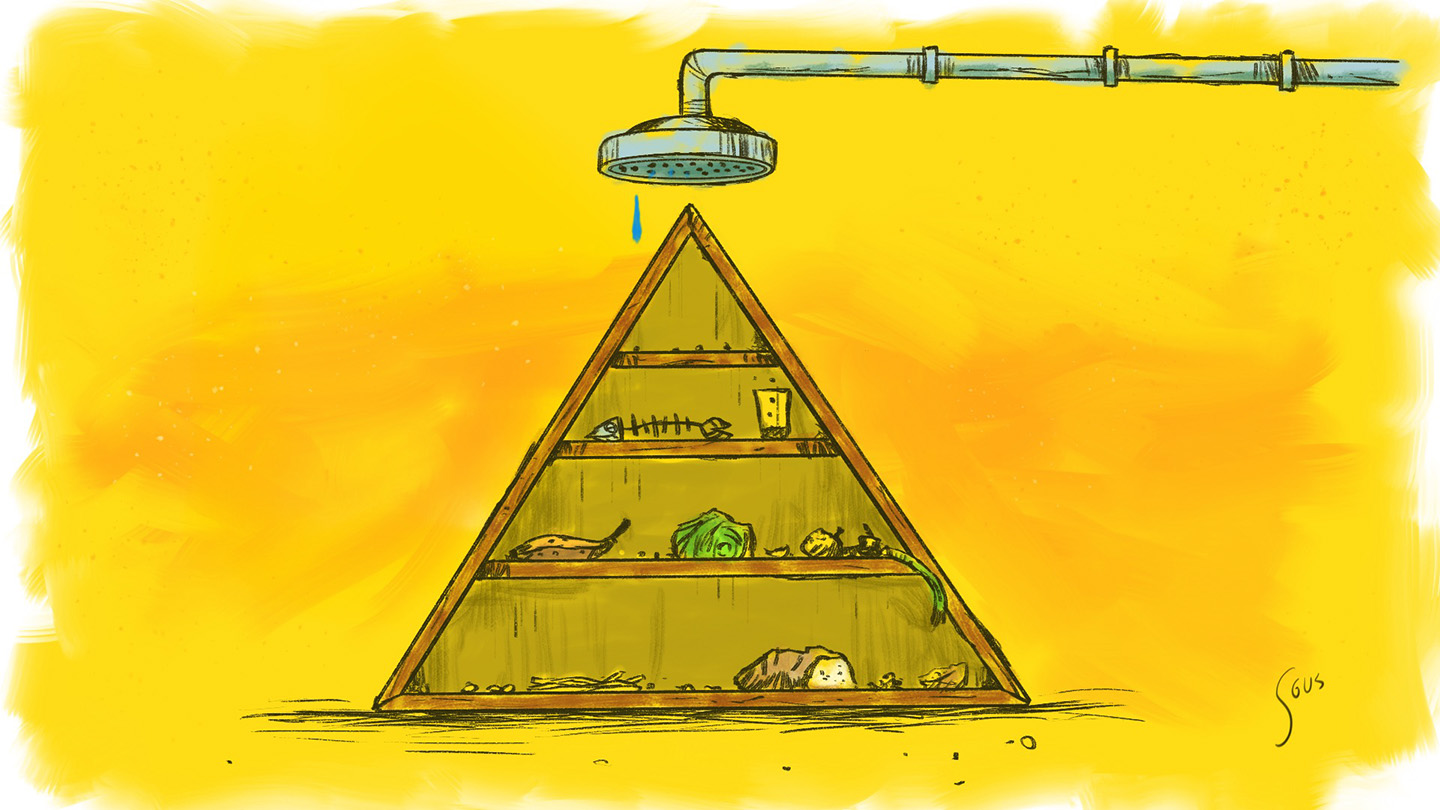
March 07, 2024
Sidestepping the Transformer Shortage
Following COVID-19, the US is experiencing a shortage of large power transformers, crucial for connecting generation to our grid, delaying transmission line projects by up to five years. As electricity demand increases, utilities and developers face challenges in delivering power from production to demand.
Currently, domestic production fulfills just 20% of the U.S. transformer demand, causing lead times for major power installations to skyrocket. In a landscape where the energy transition leads to heightened electricity demand, what potential solutions are there?
The transformer shortage should not impede progress but rather present an opportunity for utilities and developers to explore solutions like investing directly in transformer production or exploring alternative strategies to reduce energy load and need for long-distance transmission.
How does this affect you?
Utilities companies need to explore alternative network topologies to replace long-distance transmission systems and minimize the need for transformers during grid expansions.
Developers need to adhere to maximum net-zero standards to guarantee that both new and ongoing projects are equipped with energy-efficient practices that minimize energy use.
CFOs and capital planning teams need to invest directly in supply chains and innovative technologies to ensure their business resilience despite these shortages.
Regulators need to implement policies to reduce energy loads, accelerate permitting processes, and incentivize the production of additional transformers.

Recent research indicates that global electricity demand is projected to increase more rapidly over the next three years, averaging a growth rate of 3.4% annually through 2026. Moreover, with the rapid growth of renewables, ensuring grid connections for new generation capacity is now more crucial than ever to avoid energy curtailment and electricity losses.
The transformer shortage presents three primary concerns: supply chain, energy load, and long-distance transmission. What are some solutions to sidestep the transformer problem?
Supply Chain. The most obvious yet challenging solution is to address the supply issue directly by investing in transformer manufacturing capabilities.
Address the problem itself. Utilities and developers can take advantage of tax incentives and regulations to address the issue at hand. The Biden Administration's Domestic Content Bonus offers increased tax incentives in production and investment tax credits by nearly 10% to boost domestic production of industrial equipment. Additionally, in California, AB50 and SB410 provide utilities with flexibility in meeting energization timeframes.
Direct investment. In conjunction with the IRA, smaller entities with insufficient tax liability can trade tax credits with a third party for instant funds. This enables utilities and developers to invest in cutting-edge technology and directly into their supply chains, ultimately promising higher financial gains.
Reduce energy load. Industry-specific targets aim to lower energy consumption, and preemptively adhering to the strictest regulations will diminish the need for transformers.
Public transportation. In early 2023, the Biden-Harris Administration introduced a blueprint for decarbonizing the transportation sector, including initiatives targeting public transportation and improved bike lanes, aiming to reduce energy consumption and costs nationwide. Research shows that urban cities with high-quality public transit result in 5 -15% fewer vehicle miles traveled than cities with basic transit options. Consequently, as the adoption of electric and hybrid vehicles increases energy demands, collaboration among utilities, developers, and policymakers becomes crucial to reduce the impact on the grid.
Building codes. Meeting maximum net-zero energy codes will conserve energy and help utilities save money on costly generation and distribution investments. For instance, recent regulations in New York mandate buildings to install zero-emissions equipment and achieve target decarbonization goals by 2040. While "net-zero" homes, featuring improved insulation and electric stoves, may incur higher upfront costs, they alleviate future long-distance transformer concerns.
V2G networks. V2G infrastructure allows EV owners to provide supplemental energy to the grid during critical peak demand. Financial incentives in monetary rewards and pass-through prices coupled with technology increases show a 10% improvement in demand during peak hours. Integration of V2G means energy can be delivered during times of low demand and sourced locally during the peak.
Reduce long-distance transmission. Large transformers aren't the only solution to long-distance transmission challenges; instead, we must rethink and redesign current grid connections.
Network topology. Utilities can bring more clean generation (solar, green hydrogen) closer to high demand in distributed energy resources and microgrids. Coupled with battery storage technology, this will encourage the growth of localized networks, decrease reliance on extensive transmission networks, and minimize electricity losses along transmission lines while increasing grid reliability.
“Non-grid” networks. In agriculture, where energy often relies on long-distance transmission, exploring "non-grid" networks is crucial. These networks, regions capable of generating power locally and independently, offer promising solutions, especially in states where permitting processes are delayed. The HydroGlen Project is a prime example of how rural and farming communities can generate renewable energy and green hydrogen to achieve self-sufficiency. Green hydrogen offers promising potential for revolutionizing future farming practices with its efficient energy usage for electricity, cost-effective production, and net-zero emissions. This can be harnessed to power irrigation systems and autonomous farming machinery, further enhancing agricultural sustainability and productivity.
Alternative transmission train. In the case of green hydrogen, electrolyzers can be built near power plants, using trucks, trains, or pipelines for transportation, thereby reducing the need for transmission to power electrolyzers sited near hydrogen demand. This approach offers advantages such as bridging intermittent energy sources and enhancing grid stability.
Instead of waiting for solutions to emerge, we must actively explore alternative approaches to progress our transition towards green energy. With rapid technological advancements and deployment, utilities and developers will see a greater ROI if we start now. The transformer shortage has put our grid in checkmate; what will be your next move?
Until next time,
Actual
More recent newsletters
April 25, 2024
ACTUAL
Catalonia, Spain, has recently declared a drought emergency as reservoirs plunge to critically low levels at just 15% of full...
April 11, 2024
ACTUAL
The automotive industry has been undergoing a drastic transformation, transitioning from combustion engine vehicles to include EVs, hybrid engines, and...
March 21, 2024
ACTUAL
The thrilling races of Formula 1 are powered by behind-the-scenes innovation, where even the slightest tweaks in aerodynamics or engine...


